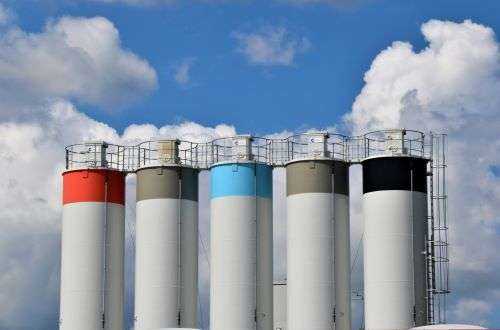As the chemicals industry navigates a pivotal shift towards sustainability, companies are investing in green technologies and grappling with the challenges of increased demand and the need to reduce carbon emissions.
Green Initiatives Propel Industry Growth
The chemicals industry is integral to the global economy, and it’s currently experiencing a transformative phase driven by a surge in green initiatives. Governments, stakeholders, and consumers are pushing for sustainable practices, prompting the industry to invest heavily in technologies that could help achieve a net-zero carbon footprint by 2050. Deloitte highlights that the chemicals sector is essential, with over 75% of emissions-reduction technologies depending on it.
The rise in demand for essential chemicals, such as those used in renewable energy storage and wind turbine manufacturing, is expected to increase prices, marking a recovery from a period of stagnation caused by economic factors in the U.S. and Europe. However, this demand surge presents a challenge for chemical producers, historically significant carbon emitters, to adopt cleaner production methods.
Policy and Investment in Clean Energy
The U.S. government has introduced policies like the Infrastructure Investment and Jobs Act and the Inflation Reduction Act to reduce reliance on foreign energy sources and bolster domestic production. These policies are channeling over $500 billion into clean-energy sectors, yet a small portion is allocated to decarbonizing heavy industries like chemicals.
Investments in energy, as reported by the International Energy Agency, reached approximately $2.8 trillion in 2023, with 60% dedicated to clean energy. Beyond financial incentives, societal shifts towards sustainability are also influencing the industry’s evolution.
Strategies for Sustainable Supply Chains
To meet sustainability goals, companies are re-evaluating their supply chains, focusing on suppliers that adhere to sustainable production and distribution practices. Deloitte’s data suggests that Scope 3 emissions are a significant concern, accounting for the majority of organizational emissions.
Chemical companies are responding by investing in alternative, greener products and technologies, such as blue ammonia, blue hydrogen, and lithium iron phosphate. Carbon capture, advanced recycling, and nuclear process electrification are also gaining traction. The American Chemistry Council members are reportedly dedicating a quarter of their budgets to sustainable manufacturing.
Competitive Edge Through Environmental Stewardship
The shift towards environmentally conscious production offers chemical and material manufacturers a competitive advantage. While some costs may be passed to customers, the combination of brand benefits and government incentives is expected to yield positive returns.
For those dependent on the chemical industry for sustainable technologies, understanding the manufacturing processes and supply chains of chemical producers is crucial. Transparency in these processes can give providers a competitive edge as clients scrutinize their supply partners more closely.
Chemical and material producers must stay abreast of technological advancements and industry trends to meet sustainability demands. Market insights and category intelligence are vital for assessing the supply and demand of sustainable materials, helping both producers and buyers manage change and optimize outcomes.





